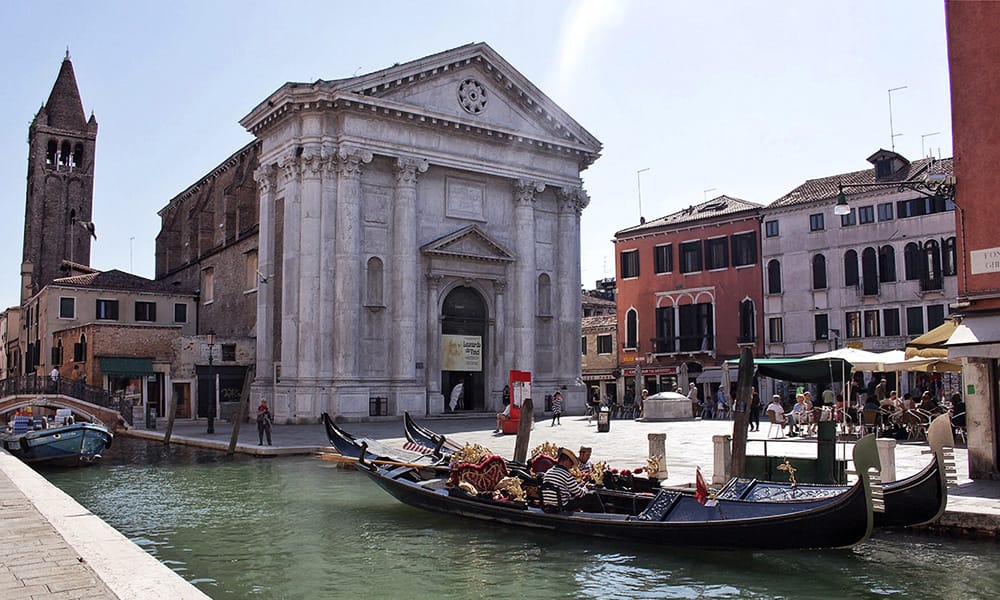“A tongue of earth where the new merges with the old”: with a quote by art historian Angela Vettese we sail to the discovery of our contemporary Giudecca, to get in contact with an out of the ordinary side of Venice, far from the most common locations of interest.
Start by admiring the Palladian church of the Redentore, a symbol of the religious vow Venetians took to eradicate the plague in 1575.
The first pit stop is a guilty-pleasure at osteria “Al Pontil” to try the typical Venetian cicchetti, meatballs andmozzarella in carrozza and other delicious plates of Pino’s homemade-like cuisine. A relaxed, informal setting will welcome you with ever-on radio music from behind the counter.
A few steps ahead we find the GAD. There is no way to get it wrong: indeed one of Venice’s symbols, the gondola, is marking the large entrance of Giudecca Art District, an artistic centre born from the restoration of industrial spaces that today hosts contemporary art exhibits. Grabbing your attention, immense construction cranes and boats of the shipyard in the distance; inside, the characteristic scent of wood and theatrical half-light make the venue’s atmosphere very suggestive and experimental.
Following stop at “Altanella” for its prime quality local plates as creamed codfish, sardines and bigoli in salsa – the typical Venetian pasta dish.
“Don’t look for love, look for books” is the motto of the Marco Polo library, and we can follow it too by getting in to look for a book, an ever-lasting classic, a latest release, or maybe to buy a tote bag signed “Le Malefatte”, a gesture which will support the production of handmade bags and accessories by the detainees of Giudecca’s women prison.
Proceed to Campo Junghans with its contemporary buildings, recovery works by architect Cino Zucchi. Nearby a rectangular space with old chimneys on its houses’ roofs opens itself: Corte dei Cordami, an historic production site of naval rods until 1995.
However, the craftsmen who are still producing open the doors of their workshops to the public at the Convento dei Santi Cosma e Damiano, where it is possible to observe the artistical process underwent by glass, metals and paper, as well to buy a souvenir.
The promenade continue next the precious textile factory from the eclectic Mariano Fortuny, Spanish artist, painter, designer and scenographer. It would be a dream to discover the techniques that made his fabrics famous worldwide, but the workshops of the manufacturing space remain closed to the public in order for its secrets to remain preserved. The showroom and courtyard on the other hand are visitable upon request.
Almost at the end of Giudecca, Molino Stucky, a neo-gothic palace neighbouring the Fortuny factory, deserves our attention: now hotel of the Hilton chain, it was once a wheat factory.
For an even more complete experience Inside Venice suggests:
- Harry’s dolci, where you can enjoy an aperitivo or a typical Venetian plate facing the canal of Giudecca.
- Osteria da Moro for a standing cicchetto and high quality wines.
- The elegant Villa Heriot and its garden that looks out on the south laguna, towards the Isole degli Armeni, San Servolo and Le Grazie.
- A break at the island’s public park will leave you with you a gift-card landscape.
- At just one steamboat stop don’t miss the activities organized by the project Le Stanze Del Vetro, where you can find, until the 10th of January 2021, the exhibition “Venezia e lo Studio Glass Americano” at the Isola di San Giorgio.
F.M.








